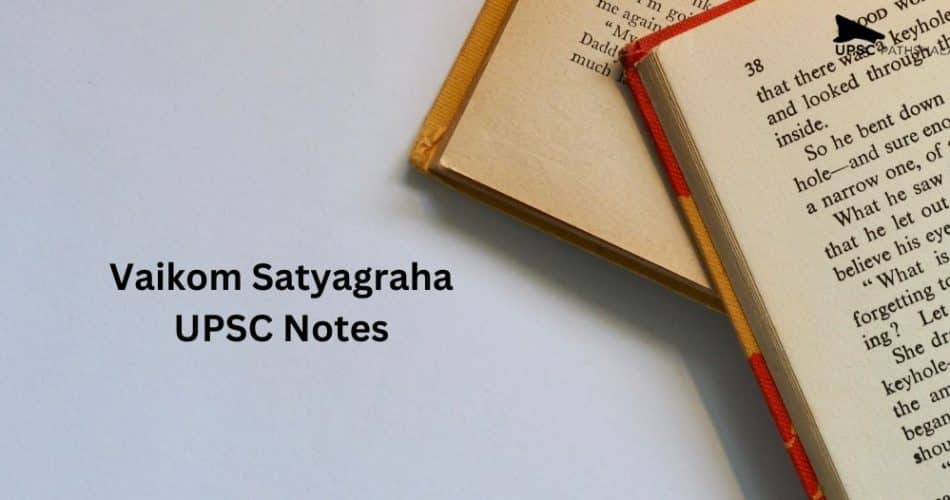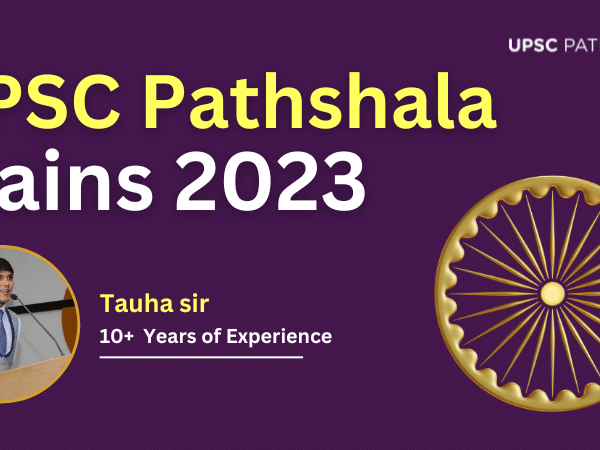Vaikom Satyagraha is a significant chapter in India’s freedom struggle, which paved the way for the Dalit and backward communities’ right to enter public spaces. The movement started in 1924 in the small town of Vaikom in Kerala, and it aimed to eradicate the practice of untouchability and caste discrimination prevalent in society.
In this blog, we will delve into the key events that shaped the Vaikom Satyagraha movement, understand its significance in India’s fight for freedom, and explore how it is relevant for the UPSC exam. We will analyze the key leaders, their ideologies and examine the strategies they employed to mobilize people.
Moreover, this blog will also highlight how the Vaikom Satyagraha movement has influenced the socio-political landscape of India and contributed to the Constitution’s making. So, whether you are a history enthusiast or an aspirant preparing for the UPSC exam, this blog will provide crucial insights into Vaikom Satyagraha’s significance and its relevance for the UPSC exam.
Vaikom Satyagraha in UPSC Relevance
Vaikom Satyagraha is a significant event in Indian history and has immense relevance for the UPSC exam. The UPSC exam is conducted to select candidates for various civil services, including the Indian Administrative Service (IAS), Indian Police Service (IPS), and Indian Foreign Service (IFS). The exam comprises three stages- Preliminary, Main, and Interview.
In the UPSC exam, questions related to India’s freedom struggle and the country’s socio-economic and political movements are often asked. Vaikom Satyagraha is an important chapter in India’s freedom struggle, and its impact can be seen in the Indian Constitution’s making. Therefore, having a good understanding of Vaikom Satyagraha can help aspirants score well in the exam.
Moreover, Vaikom Satyagraha was a significant movement for the Dalit and backward communities, and the issues related to these communities are still relevant in contemporary India. Hence, understanding the movement’s context and impact can help aspirants develop a nuanced understanding of contemporary Indian society and politics.
The movement’s leaders, strategies, and ideologies can also be studied in-depth and used as case studies in the exam’s essay paper. Aspirants can analyze the factors that led to the success of the Vaikom Satyagraha and compare it with other socio-political movements in India and other parts of the world.
Vaikom Satyagraha is a crucial topic for UPSC aspirants to study, and it has immense relevance for the exam. Understanding the movement’s context, impact, and leaders can help aspirants score well in the exam and develop a nuanced understanding of Indian society and politics.
Also Read: How to Begin IAS Preparation? The Ultimate Guide for Cracking the UPSC
Vaikom Satyagraha UPSC Notes
Here are some key notes on Vaikom Satyagraha that can be helpful for UPSC aspirants:
- Vaikom Satyagraha was a non-violent movement led by Mahatma Gandhi in 1924 to protest against untouchability and caste discrimination in public spaces.
- The movement took place in Vaikom, a small town in Kerala, where the lower-caste people were not allowed to use the roads near the Hindu temple.
- The movement gained momentum when leaders like K. Kelappan and T.K. Madhavan joined and started organizing protests.
- The protesters demanded the opening of the roads near the temple for all castes, the removal of the ban on the entry of Dalits in temples, and the grant of land for the landless.
- The movement was not limited to Kerala and inspired similar protests in other parts of India.
- The Vaikom Satyagraha was a significant event in India’s freedom struggle and was an early step towards social justice and equality.
- The movement’s impact can be seen in the Indian Constitution’s making, where provisions were made to end untouchability and ensure equality and justice for all.
- Vaikom Satyagraha can be studied in-depth and used as a case study in the UPSC essay paper to analyze the factors that led to the movement’s success.
- The movement’s leaders, ideologies, and strategies can be studied to understand the evolution of India’s socio-political movements.
- The issues related to the Dalit and backward communities, which were raised during the Vaikom Satyagraha, are still relevant in contemporary India, and hence, the movement’s context and impact are essential to understand for aspiring civil servants.
Also Read: IPS Officer Salary: What are the ranks in IPS? What are the duties of IPS Officers?
Key Events, Significance for UPSC Exam Preparation Online
Here are some key events and the significance of Vaikom Satyagraha for UPSC exam preparation online:
- Background: Vaikom Satyagraha was a non-violent movement that was started in 1924 in the small town of Vaikom in Kerala to protest against the discriminatory practices against the lower castes.
- Protests and Agitation: The movement saw several protests and agitations led by leaders like K. Kelappan, T.K. Madhavan, and Mahatma Gandhi. The protesters demanded the opening of the roads near the temple for all castes, the removal of the ban on the entry of Dalits in temples, and the grant of land for the landless.
- Success and Impact: The movement gained momentum and eventually led to the opening of the roads near the temple for all castes. The movement also helped in raising awareness about the issue of untouchability and caste discrimination in India. The movement’s impact can be seen in the Indian Constitution’s making, where provisions were made to end untouchability and ensure equality and justice for all.
- Relevance for UPSC Exam Preparation: Vaikom Satyagraha is a significant event in India’s freedom struggle, and it has immense relevance for the UPSC exam preparation. Questions related to India’s freedom struggle and the country’s socio-economic and political movements are often asked in the exam. Understanding the context, impact, and leaders of Vaikom Satyagraha can help aspirants develop a nuanced understanding of Indian society and politics. The movement’s leaders, ideologies, and strategies can be studied to understand the evolution of India’s socio-political movements. The movement can also be used as a case study in the UPSC essay paper to analyze the factors that led to its success.
Vaikom Satyagraha is a crucial topic for UPSC exam preparation online. Aspirants can study the movement’s context, impact, and leaders to develop a deeper understanding of India’s freedom struggle and its socio-economic and political movements.
How to Prepare for Such Topics Online?
UPSC Pathshala is an online learning platform that provides comprehensive guidance to aspirants who are preparing for the UPSC exam. Here are some ways in which UPSC Pathshala can help aspirants prepare for topics like Vaikom Satyagraha:
- Structured Course Content: UPSC Pathshala provides aspirants with structured course content that covers all the topics and concepts that are relevant for the UPSC exam. The course content is designed by experts and is regularly updated to ensure that aspirants receive the latest and most accurate information.
- Experienced Faculty: UPSC Pathshala has a team of experienced faculty members who are experts in their respective fields. They provide aspirants with personalized guidance and support, which is crucial for success in the UPSC exam.
- Mock Tests and Practice Questions: UPSC Pathshala provides aspirants with mock tests and practice questions that help them assess their preparation level and identify areas where they need to improve. The platform also provides detailed feedback and analysis of the tests, which is helpful for aspirants to refine their strategies and perform better in the actual exam.
- Current Affairs Coverage: UPSC Pathshala provides aspirants with comprehensive coverage of current affairs, which is an essential part of the UPSC exam. The platform provides daily, weekly, and monthly updates on current affairs, along with analysis and opinion pieces on important issues.
- Doubt Clearance Sessions: UPSC Pathshala provides aspirants with doubt clearance sessions where they can interact with the faculty members and get their queries resolved. This helps aspirants to clarify their doubts and strengthen their understanding of the topics.
Also Read: UPSC Preparation Tips for Beginners: Strategy for The Indian Civil Service Examination
Conclusion
In conclusion, UPSC Pathshala is an excellent platform for aspirants who are preparing for the UPSC exam, as it provides them with comprehensive guidance, personalized support, and relevant study material. With its structured course content, experienced faculty, mock tests, current affairs coverage, and doubt clearance sessions, UPSC Pathshala can help aspirants prepare for topics like Vaikom Satyagraha and other important topics in a more efficient and effective manner.







